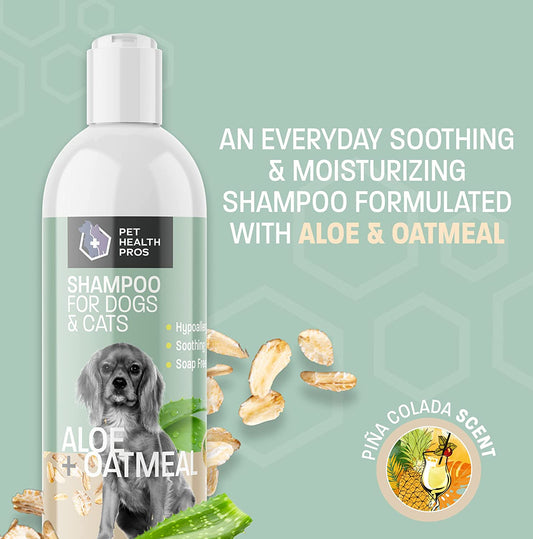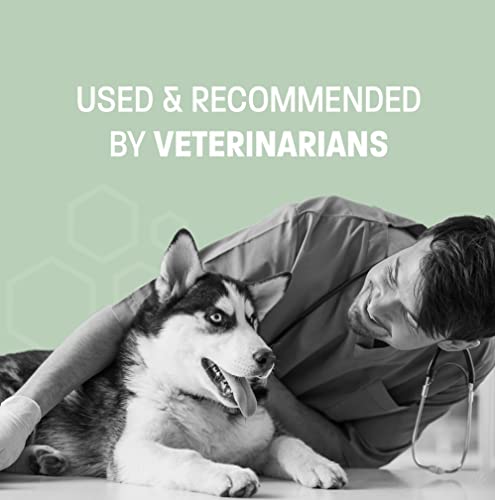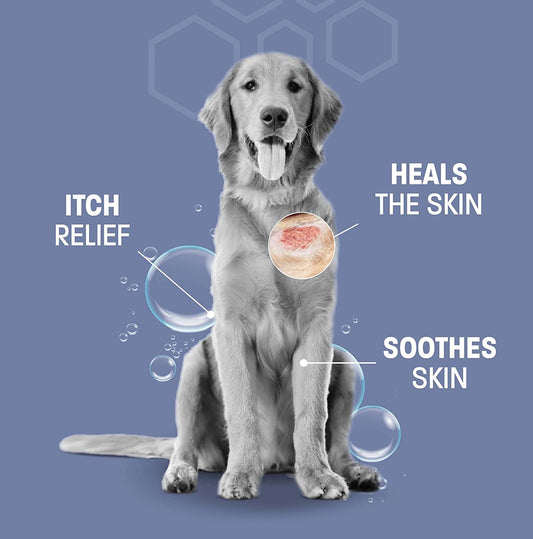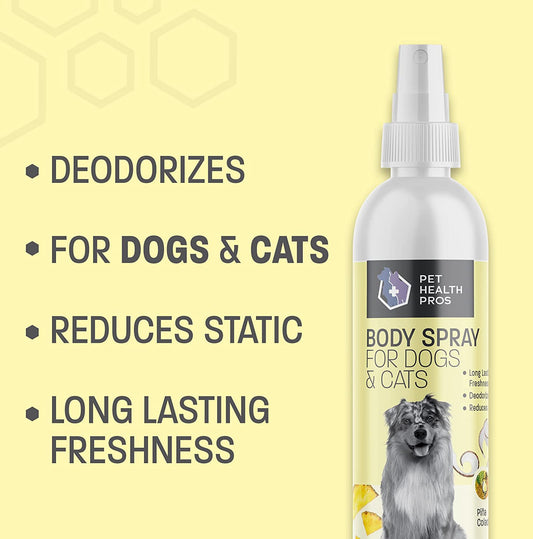Choosing the right tear stain remover for your dog can be a bit tricky. Tear stains are those dark, unsightly marks that appear under a dog's eyes. They can make your furry friend look less cute and might even be a sign of health problems. This article will guide you through everything you need to know to pick the best tear stain remover for your dog.
Key Takeaways
- Understand the causes of tear stains to better address the problem.
- Know the different types of tear stain removers available.
- Look for safe and effective ingredients in tear stain removers.
- Follow the correct steps to apply tear stain removers safely.
- Regular grooming and proper diet can help prevent tear stains.
Understanding Tear Stains in Dogs
Causes of Tear Stains
Tear stains on dogs can happen for many reasons. Some common causes include blocked tear ducts, entropion (rolled-in eyelids), and distichia (extra eyelashes). Allergies and infections can also lead to tear stains. It's important to figure out the cause to treat it properly.
Common Breeds Prone to Tear Stains
Certain dog breeds are more likely to get tear stains. Breeds like Maltese, Shih Tzus, and Poodles often have this issue. Their facial structure and hair type make them more prone to tear stains. Knowing if your dog is one of these breeds can help you take steps to prevent it.
Health Implications of Tear Stains
Tear stains are not just a cosmetic issue. They can signal underlying health problems. Infections and eye irritations can cause discomfort for your dog. Regular check-ups with your vet can help catch any health issues early.
Keeping your dog's eyes clean and healthy is crucial for their overall well-being.
Types of Tear Stain Removers
When it comes to choosing the best tear stain remover for your dog, there are several options available. Understanding the different types can help you make an informed decision.
Topical Solutions
Topical solutions are applied directly to the stained area. These products often come in the form of wipes, gels, or liquids. They work by breaking down the stains and preventing new ones from forming. Topical solutions are usually easy to use and can provide quick results.
Oral Supplements
Oral supplements are ingested by your dog and work from the inside out. These supplements often contain ingredients that help reduce tear staining by addressing underlying issues such as allergies or poor diet. They can be a good option if topical solutions are not effective.
Natural Remedies
Natural remedies include ingredients like chamomile, apple cider vinegar, and coconut oil. These remedies are often preferred by pet owners who want to avoid chemicals. Natural remedies can be effective but may take longer to show results compared to commercial products.
Choosing the right tear stain remover involves considering factors like effectiveness, safety, and ease of use. Always consult your veterinarian before starting any new treatment for your dog.
Key Ingredients to Look For
Safe and Effective Ingredients
When choosing a tear stain remover for your dog, it's important to look for safe and effective ingredients. Eyebright is a popular ingredient known for its soothing properties. Olive leaf extract is another beneficial component, often included for its natural antibacterial qualities. Cranberry extract can help maintain a healthy urinary tract, which indirectly supports tear duct function. Marshmallow root is also commonly found in these products for its anti-inflammatory benefits.
Ingredients to Avoid
Not all ingredients are safe for your dog. Avoid products containing harsh chemicals like bleach or hydrogen peroxide, as they can cause irritation. Artificial fragrances and dyes should also be avoided, as they can lead to allergic reactions. Always read the label carefully to ensure the product is free from harmful substances.
Natural vs. Chemical Ingredients
There is an ongoing debate between natural and chemical ingredients in tear stain removers. Natural ingredients, such as those mentioned earlier, are generally safer and have fewer side effects. Chemical ingredients might offer quicker results but can pose risks if not used correctly. It's crucial to weigh the pros and cons of each type before making a decision.
Choosing the right tear stain remover involves understanding the ingredients and their effects on your dog's health. Always consult your veterinarian if you're unsure about a product's safety.
How to Apply Tear Stain Removers
Step-by-Step Application Guide
Applying tear stain removers correctly is crucial for their effectiveness. Start by cleaning your dog's face with a damp cloth to remove any dirt. Then, apply the tear stain remover as directed on the product label. Make sure to avoid contact with your dog's eyes. Gently rub the solution into the stained area and let it sit for the recommended time before wiping it off.
Frequency of Use
The frequency of application depends on the product and the severity of the stains. Some products are safe for daily use, while others should be used less frequently. Always follow the manufacturer's instructions to avoid overuse, which can irritate your dog's skin.
Precautions to Take
When using tear stain removers, it's important to take certain precautions. First, always do a patch test to ensure your dog isn't allergic to the product. Keep the solution away from your dog's eyes to prevent irritation. If you notice any redness or discomfort, discontinue use immediately and consult your veterinarian. Regularly check for any signs of infection or worsening of the stains, as this may indicate an underlying health issue.
Regular application and proper precautions can help maintain your dog's eye health and keep those pesky stains at bay.
Evaluating Product Reviews and Recommendations
Reading Customer Reviews
When choosing a tear stain remover for your dog, reading customer reviews can be very helpful. Look for reviews that mention how well the product worked and if there were any side effects. Pay attention to comments about the ease of use and the dog's reaction to the product. This can give you a good idea of what to expect.
Consulting Veterinarians
It's always a good idea to talk to your vet before trying a new product on your dog. Veterinarians can provide expert advice on which products are safe and effective. They can also help you understand if your dog's tear stains are caused by an underlying health issue that needs to be addressed.
Checking for Certifications
When evaluating tear stain removers, check if the product has any certifications. Certifications from reputable organizations can indicate that the product has been tested for safety and effectiveness. This can give you peace of mind that you are choosing a quality product for your dog.
Consulting your vet and checking for certifications can help ensure you are using a safe and effective product for your dog's tear stains.
DIY Tear Stain Remover Solutions
Homemade Recipes
Creating your own tear stain remover at home can be a cost-effective and natural way to keep your dog's eyes clean. One popular recipe involves mixing equal parts of distilled water and hydrogen peroxide with a pinch of cornstarch to form a paste. Apply this mixture carefully around your dog's eyes, avoiding direct contact with the eyes themselves. Another simple solution is using a saline solution made from a teaspoon of salt dissolved in a cup of warm water.
Pros and Cons of DIY Solutions
DIY tear stain removers can be a great option for pet owners looking for natural alternatives. They are often cheaper and free from harsh chemicals. However, they may not be as effective as commercial products and can sometimes cause irritation if not used properly. It's important to consult your vet before trying any homemade remedies to ensure they are safe for your pet.
Safety Tips for DIY Remedies
When using DIY tear stain removers, always use clean and sterile tools to avoid introducing bacteria. Test the solution on a small area first to check for any adverse reactions. Never use ingredients that are not safe for dogs, such as essential oils or alcohol. Regularly monitor your dog's eyes for any signs of irritation or infection, and discontinue use if any issues arise.
For the ultimate guide to dog eye wipes: gentle cleansers, antibacterial agents, natural moisturizers, and hypoallergenic formulas for dog eye care. Consult vet for proper usage.
Maintaining Tear Stain-Free Eyes
Regular Grooming Practices
Regular grooming is essential to keep your dog's eyes free from tear stains. Daily face grooming can help remove any debris or moisture that might cause staining. Use a clean, damp cloth to gently wipe around your dog's eyes. Make sure to use purified, distilled, or reverse-osmosis water sources to prevent excessive tearing.
Dietary Considerations
Your dog's diet plays a crucial role in maintaining tear stain-free eyes. Ensure your dog is eating high-quality food that doesn't contain artificial additives or fillers. Sometimes, food allergies can cause excessive tearing, so it's important to monitor your dog's reaction to different foods. Adding a teaspoon of apple cider vinegar to your dog's water can help balance pH levels and reduce tear stains.
Monitoring Your Dog's Health
Keeping an eye on your dog's overall health is vital. Regular vet check-ups can help identify any underlying health issues that might be causing tear stains. Conditions like ear infections or dental problems can lead to excessive tearing. If you notice any changes in your dog's tearing patterns, consult your vet immediately.
Consistent care and attention to your dog's grooming, diet, and health can significantly reduce the occurrence of tear stains. Remember, a healthy dog is a happy dog.
Keeping your pet's eyes free from tear stains can be a challenge, but it doesn't have to be. Regular cleaning with the right products can make a big difference. Visit our website to explore our range of eye care solutions that are trusted by vets and loved by pet owners. Your furry friend deserves the best!
Conclusion
Choosing the best tear stain remover for your dog doesn't have to be hard. By knowing what causes tear stains, checking the ingredients, and reading reviews, you can find a product that works well. Remember to always follow the instructions on the label and talk to your vet if you have any questions. With the right care, your dog's eyes can stay clean and healthy. Happy pet parenting!
Frequently Asked Questions
What causes tear stains in dogs?
Tear stains can be caused by various factors, including genetics, diet, and infections. Some dogs produce more tears, which can lead to stains.
Are certain dog breeds more prone to tear stains?
Yes, breeds like Maltese, Shih Tzus, and Poodles are more likely to get tear stains due to their facial structure and hair around the eyes.
How often should I use a tear stain remover on my dog?
It depends on the product and your dog's needs, but most products recommend using them daily or a few times a week for best results.
Can I make a tear stain remover at home?
Yes, there are DIY recipes using natural ingredients like apple cider vinegar and coconut oil. However, you should consult your vet before trying any homemade solutions.
What ingredients should I avoid in tear stain removers?
Avoid products with harsh chemicals or artificial fragrances, as they can irritate your dog's eyes and skin. Look for natural and safe ingredients.
Is it necessary to consult a vet before using tear stain removers?
Yes, it's always a good idea to talk to your vet before starting any new treatments to ensure they're safe and suitable for your dog.









